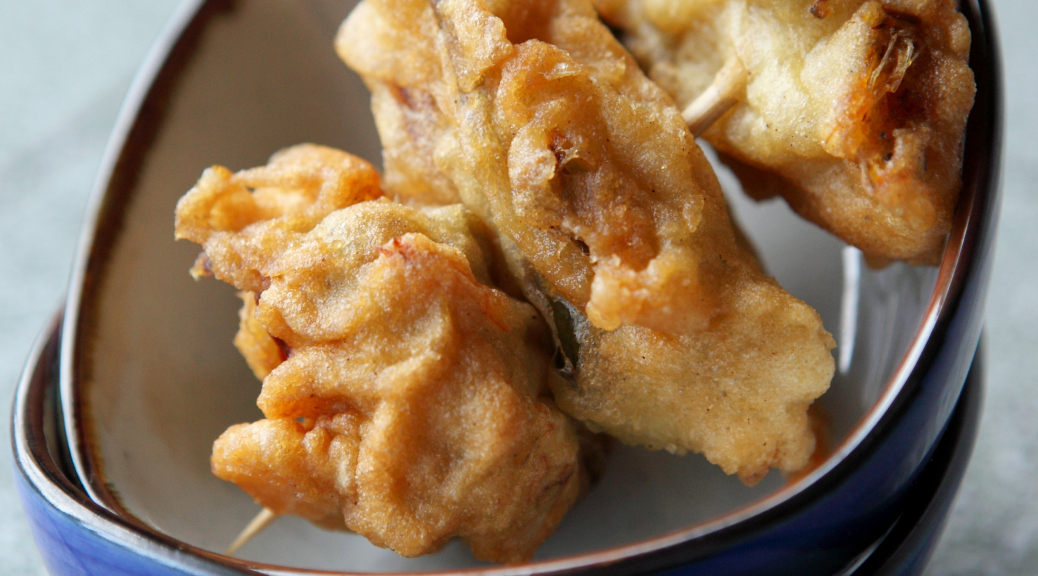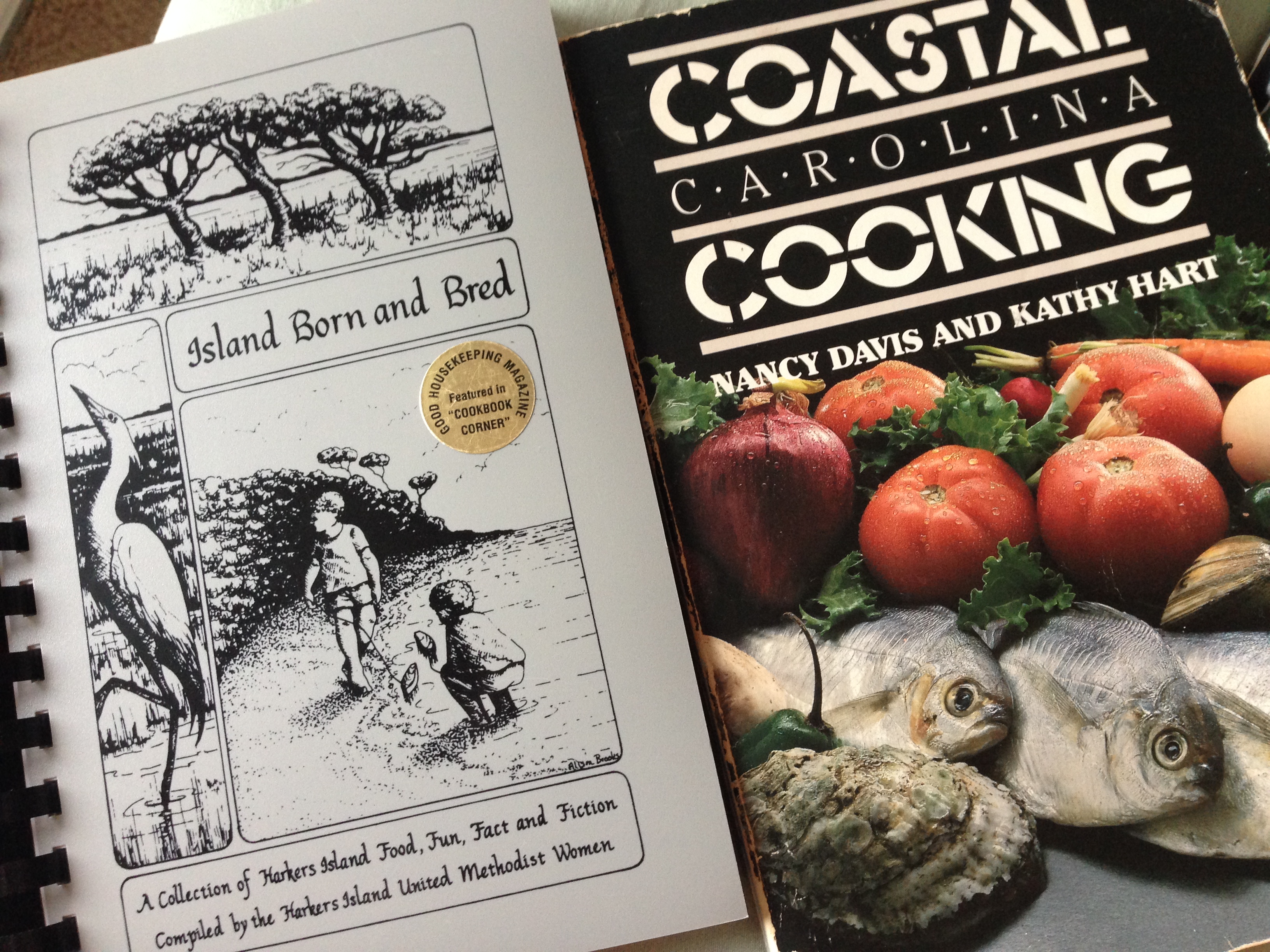Sometimes even before sunrise on Saturdays when I was a child, my family of part-time fishers were on Onslow County’s New River headed to our favorite clamming hole. While one of us kids dug clams with my mother, another of us rode with Dad on a small skiff pulling a shrimp trawl, setting nets or looking for oysters. Once, we lucked up on shallows teeming with bay scallops.
No matter how tired we were at the end of the work day, enough energy always remained to fry up a batch of seafood fritters.
Supporter Spotlight

A mountain of the fluffy, fried pillows, golden brown and jammed full of chopped shrimp, scallops or clams, sometimes a combination, teetered on the same platter each weekend. What looked like enough to feed a crowd was quickly consumed by my family of just four.
My Italian mother, who knew little of cooking seafood until we moved from central New Jersey to the N.C. coast, based our fritter recipe on one she acquired from a Harkers Island friend named Roma Nelson Chadwick. Our neighbors were related to Roma, and sometimes we were invited to accompany them to “dinner,” meaning lunch, at Roma’s tidy Harkers Island home. Her small table, covered in the cleanest white cloth I’d ever seen, was a groaning board holding the weight of bread, collards, seafood, sweet corn, fresh tomatoes and, one day, clam fritters.
“What are those?” my mother said, zooming in on fritters that likely reminded her of the delicious things that come out of fry shops known as “friggitorie” in Naples, Italy, not far from her hometown.
Roma described a simple recipe: Stir together water, seasonings and self-rising flour in a bowl. Add chopped clams. Drop spoonfuls of the batter into hot oil. Fry until browned. Serve hot, cold or at room temperature.
And we did, by the dozens, as coastal N.C. families have done for generations.
Supporter Spotlight
I found a recipe almost just like Roma’s in Island Born and Bred, a community cookbook collection of Harkers Island recipes, lore and history. It contained scallops. Another recipe relied on the clams’ own juices rather than water to moisten the batter.

That Harkers Island “high tiders,” the name islanders give to folks born and raised “on the water,” regularly fry seafood fritters is no surprise. Nearly every culture has fritter-type foods, which date to the ancient Romans. The name fritter stems from the Latin frigere, which means “fry.” Some historians think fritters may have been introduced from the Middle East, by Crusaders returning to Western Europe, according to An A-Z of Food & Drink by John Ayto (Oxford University Press, 2002).
Besides being familiar, fritters are a delicious way to stretch food portions during lean times. No one complains about too little meat in a tasty morsel of deep-fried dough.
Roma showed my mother clam fritters. Back home, Mom decided to use the fritter recipe for shrimp and scallops, too. It became my job to make the batter. Even as a kid, I was never required to measure ingredients for this dish. The only instructions that mattered were: 1) Season well (Mom liked plenty of garlic, basil, paprika, salt, black pepper and a touch of cayenne or crushed red pepper in the batter), 2) Make the batter runny, just a tad thinner than pancake batter and 3) Use lots of seafood
I coarsely chopped the seafood, usually raw shrimp unless we had leftover steamed shrimp in the refrigerator.
I have since found various versions of coastal Carolina seafood fritters. Some call for milk, eggs or both. Recipes may contain a little onion or bell pepper, but mostly seasonings are salt and black pepper. It was Mom’s idea to bump up the spice.
Anytime someone in my mother’s neighborhood clique made a new recipe, they shared samples with everyone in the circle. Mom was no different. Before long, we had lots of neighbors stopping by for fritters once they saw our boat back on its trailer in the driveway after a day a fishing.
Eventually, Mom’s friends crafted their own recipe. We called ours “shrimp patties,” as if we had invented something completely different from a fritter. Of course, we hadn’t. When the hot fritters came from the frying pan, someone always mentioned Roma.
Scallop Fritters
2 cups chopped scallops
¾ cup self-rising flour
Salt and pepper to taste
1/3 cup water
Mix ingredients. Using 2 tablespoons of mixture for each fritter, fry in hot oil. Yield 14-16 fritters.
Note: Mix should be the consistency of thick pancake batter mix.
Source: Jan Gillikin for Island Born and Bred: A Collection of Harkers Island Food, Fun, Fact and Fiction, compiled by the Harkers Island United Methodist Women and available at Core Sound Waterfowl Museum and Heritage Center in Harkers Island.
The following recipes require cooks to use their intuition. Exact proportions are not given for some ingredients.
Fried Clam Fritters
1 quart shucked clams
1 medium onion, diced
Salt and pepper to taste
Flour
Gut clams; wash three times, chop fine. Add onions, flour, salt and pepper. Spoon out fritter and fry in heated oil in iron frying pan, until golden brown. Yield 12-15 servings.
Source: Nannie Raye Poole for Island Born and Bred: A Collection of Harkers Island Food, Fun, Fact and Fiction, compiled by the Harkers Island United Methodist Women and available at Core Sound Waterfowl Museum and Heritage Center in Harkers Island.
Conch Fritters
1 quart prepared conchs, ground in food processor
Flour
1 medium onion
1 small bell pepper
1 egg
Salt and pepper to taste
Cooking oil
Mix all ingredients, except conchs, to make batter – dicing onion and bell pepper. Add conchs and fry in heated oil until golden brown.
Source: Carmen Koonce for Island Born and Bred: A Collection of Harkers Island Food, Fun, Fact and Fiction, compiled by the Harkers Island United Methodist Women and available at Core Sound Waterfowl Museum and Heritage Center in Harkers Island.








